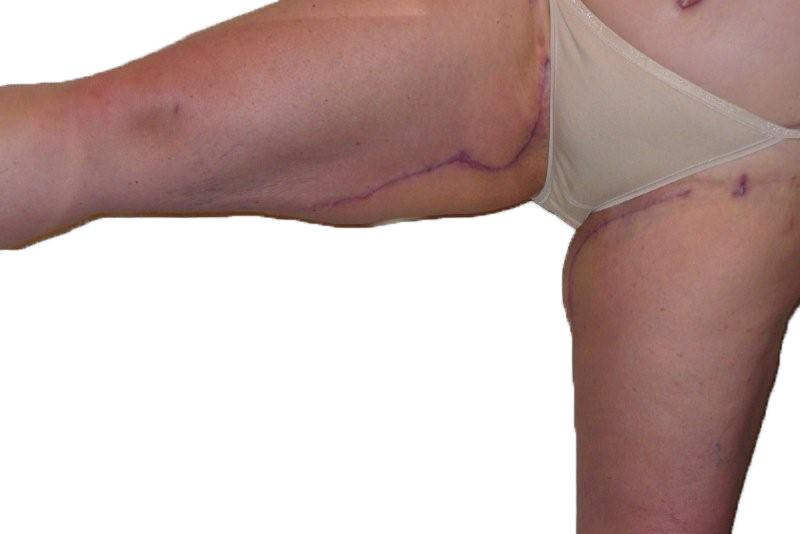Key Takeaways
- Liposuction can be an effective solution for removing stubborn lower belly fat that doesn’t respond to diet and exercise, but it’s crucial to have realistic expectations about the results.
- Proper preparation for the procedure involves consulting with a qualified surgeon to understand the risks, benefits, and the type of liposuction technique that will be used.
- Understanding the difference between subcutaneous and visceral fat is essential, as liposuction targets the former, which is directly under the skin and more amenable to removal.
- Post-procedure care is critical for recovery and includes following the surgeon’s instructions on activity levels, wearing compression garments, and attending follow-up appointments.
- Maintaining a healthy lifestyle post-liposuction is vital for sustaining the results. Incorporating a balanced diet and regular exercise can prevent the return of fat in treated areas.
- The success of liposuction for lower belly fat not only depends on the procedure itself but also on the patient’s commitment to a healthier lifestyle post-surgery.
Understanding Liposuction for Lower Belly Fat
Fat Removal
Liposuction, often referred to as lipo, is a popular procedure for removing stubborn belly fat. It targets fat deposits in the lower abdomen that resist diet and exercise. This technique is precise, allowing surgeons to sculpt the area for a flatter stomach.
Patients see significant improvements in their body contour. However, it’s crucial to have realistic expectations. Liposuction is not about losing weight but reshaping the body.
Patient Suitability
Both men and women can benefit from liposuction procedures. It’s ideal for those seeking to eliminate love handles or a protruding lower belly. The key is having stable body weight but struggling with localized fat pockets.
Good candidates also have firm, elastic skin which will adapt better post-procedure. Those with loose skin might need additional treatments like a tummy tuck procedure.
Expectation Management
Understanding that liposuction is a tool for body sculpting is vital. It’s effective for fat removal but not as a weight-loss method. Patients should maintain healthy lifestyles post-surgery to preserve results.
Realistic goals are essential. While liposuction offers dramatic improvements in appearance and self-confidence, it doesn’t change one’s overall weight significantly.
Preparing for the Procedure
Surgeon Selection
Choosing a qualified plastic surgeon is crucial. Patients should verify the surgeon’s credentials and review before-and-after photos of previous lower belly fat liposuctions. This ensures confidence in the surgeon’s ability to deliver desired results.
It’s essential to have an open dialogue about expectations. This conversation helps in understanding the potential for scarring and swelling.
Pre-Operative Assessments
Before undergoing liposuction, a comprehensive medical evaluation is necessary. This assessment identifies any underlying conditions that could affect surgery outcomes. Patients may need to adjust medications under their doctor’s guidance.
Lifestyle changes, such as quitting smoking and maintaining a stable weight, are recommended. These steps minimize risks and enhance recovery.
Surgery Preparations
The choice between general anesthesia and local anesthesia depends on the procedure’s extent. The tumescent method, involving local anesthesia, reduces bleeding and bruising risks.
Patients should arrange for post-surgery support. Having someone to drive you home and assist with daily activities during the initial healing period is vital. Wearing a compression garment aids in reducing swelling and supports the midsection’s shaping process.
Types of Abdominal Fat Targeted
Subcutaneous Fat
Subcutaneous fat lies directly under the skin. It’s what you can pinch and see. Liposuction excels in removing this layer, sculpting the abdomen into a more desirable shape.
Patients often seek to eliminate the stubborn lower belly bulge. Through liposuction, they achieve a flatter stomach. The procedure targets these fat deposits, enhancing the body’s natural contours.
Visceral Fat
Visceral fat surrounds the organs within the abdominal cavity. Unlike subcutaneous, liposuction does not target visceral fat due to its location around vital organs.
This distinction is crucial for patient expectations. Understanding that liposuction focuses on subcutaneous fat helps set realistic goals for a flat stomach.
Results in Patients
Both men and women see significant improvements post-liposuction. For males, it often means a more defined abdomen, highlighting the abdominal muscles. Women typically enjoy a smoother, tighter belly area.
These outcomes are due to the removal of excess subcutaneous fat cells. The procedure effectively reduces localized fat deposits, offering a significantly flatter and tighter abdomen.

Post-Procedure Care and Concerns
Recovery Essentials
After targeting abdominal fat through liposuction, proper care is crucial for a smooth recovery. Patients are advised to wear compression garments. These help reduce swelling and support the healing tissues. Pain or discomfort is common but manageable with prescribed medications.
Patients should gradually return to light activities. This approach aids in faster recuperation and minimizes the risk of complications.
Side Effects
Minor side effects like bruising, swelling, and numbness are expected post-liposuction. They typically resolve within weeks. Staying hydrated and following a balanced diet can accelerate the healing process.
It’s essential to recognize signs of infection or severe pain early. Prompt communication with your surgeon can prevent further issues.
Follow-Up Care
Scheduled follow-up appointments are non-negotiable for monitoring recovery progress. These visits allow surgeons to ensure that healing is on track and to address any concerns promptly.
Adhering to these appointments ensures the best possible outcomes and satisfaction with the procedure.
Maintaining Results with a Healthy Lifestyle
Diet Balance
After undergoing lower belly fat liposuction, maintaining results is crucial. A balanced diet plays a key role. It’s not just about weight loss; it’s about sustaining the quality of your contour.
Incorporate fruits, vegetables, and lean proteins into your meals. These foods improve skin elasticity and support overall health. Avoiding processed foods and sugary snacks prevents weight gain in untreated areas.
Regular Exercise
Regular exercise is another pillar of post-liposuction care. It helps keep the weight off and enhances your body’s shape.
Aim for a mix of cardiovascular activities and strength training. This combination is effective in maintaining your new contour. It also boosts metabolism, supporting long-term weight management.
Realistic Expectations
Setting realistic goals and expectations post-liposuction is important. Understand that while fat cells are permanently removed from the treated area, maintaining these results requires effort.
Love your body by giving it time to recover and adapt to its new shape. Patience during recovery reveals the true outcome of your procedure.
Final Remarks
Liposuction for lower belly fat offers a targeted approach to reshaping your body, but it’s not a one-stop solution. Understanding the procedure, preparing adequately, knowing the types of fat targeted, and following through with post-procedure care are crucial steps. Equally important is adopting a healthy lifestyle to maintain those results long-term. This journey demands commitment and a balanced approach to both surgical intervention and lifestyle changes.
Now’s the time to take action. If you’re considering liposuction for lower belly fat, consult with a certified professional who can guide you based on expertise and experience. Remember, achieving your desired body shape is possible when you make informed decisions and stick to a plan that includes proper care and healthy habits. Start your transformation journey today with confidence, knowing you’re well-informed.
Frequently Asked Questions
What is liposuction for lower belly fat?
Liposuction for lower belly fat is a surgical procedure designed to remove stubborn fat deposits in the lower abdomen, offering a more contoured and slim appearance.
How should I prepare for liposuction on my lower belly?
Prepare by following your surgeon’s instructions, which typically include stopping certain medications, arranging for post-procedure care, and fasting for a specific period before the surgery.
What types of abdominal fat can be targeted with liposuction?
Liposuction effectively targets subcutaneous fat—the layer of fat just beneath the skin—but is not suitable for visceral fat, which lies deeper around the organs.
What does post-procedure care involve after liposuction?
Post-procedure care includes wearing compression garments, managing pain with prescribed medication, avoiding strenuous activities, and attending follow-up appointments to ensure proper healing.
How can I maintain my results after liposuction?
Maintaining results involves adopting a healthy lifestyle that includes balanced nutrition, regular exercise, staying hydrated, and avoiding significant weight fluctuations to keep your newly contoured shape intact.
Is liposuction a solution for obesity?
No, liposuction is not a treatment for obesity. It’s best suited for removing localized fat deposits in individuals who are relatively close to their ideal body weight.
Can liposuction remove all my lower belly fat?
Liposuction can significantly reduce lower belly fat but may not remove all fat cells completely. The goal is to achieve a more sculpted and natural-looking result rather than eliminating every bit of fat.











